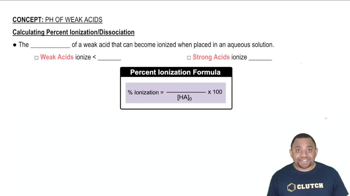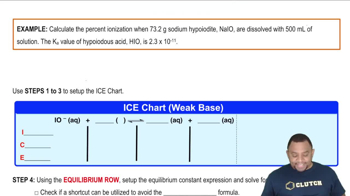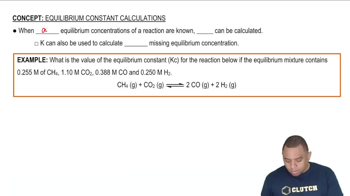Here are the essential concepts you must grasp in order to answer the question correctly.
Ionization of Weak Acids
Weak acids, like formic acid, do not completely dissociate in solution. Instead, they establish an equilibrium between the undissociated acid and its ions. The extent of this ionization is characterized by the acid dissociation constant (Ka), which quantifies the strength of the acid and its ability to donate protons.
Recommended video:
Calculating Percent Ionization of Weak Acids
Percent Ionization
Percent ionization is a measure of the degree to which an acid dissociates in solution, expressed as a percentage. It is calculated using the formula: (concentration of ionized acid / initial concentration of acid) × 100%. This value helps in understanding the strength of the acid and its behavior in different concentrations.
Recommended video:
Percent Ionization Example
Equilibrium Calculations
To calculate percent ionization, one must set up an equilibrium expression based on the initial concentration of the acid and the change in concentration due to ionization. This involves using the ICE (Initial, Change, Equilibrium) table to determine the concentrations of the species at equilibrium, which are then used to find the percent ionization.
Recommended video:
Equilibrium Constant Calculation

 Verified step by step guidance
Verified step by step guidance


